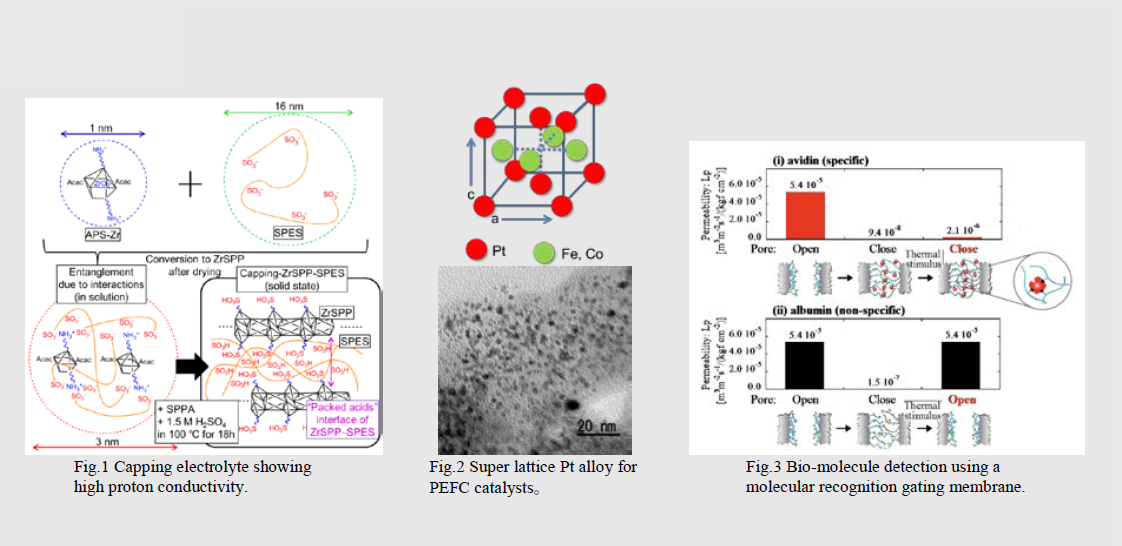CLS
Laboratory for Chemistry and Life Science, Institute of Innovative Research, Tokyo Institute of Technology
東京工業大学
科学技術創成研究院
化学生命科学研究所

LAST UPDATE 2017/02/26
-
研究者氏名
Researcher Name山口猛央 Takeo YAMAGUCHI
教授 Professor -
所属
Professional Affiliation東京工業大学科学技術創成研究院化学生命科学研究所
分子機能化学領域
Laboratory for Chemistry and Life Science, Institute of Innovative Research, Tokyo Institute of Technology
Molecular functions -
研究キーワード
Research Keywords燃料電池材料
バイオインスパイアード材料
材料機能のシステム設計
Materials for fuel cells
Bio-inspired materials
Systematic material design
- 研究テーマ
Research Subject -
材料機能のシステム設計〜燃料電池からバイオインスパイアード材料まで〜
Development of intelligent molecules for the regulation of gene expression in cells
研究の背景 Background
環境問題、エネルギー・資源枯渇問題など地球規模の問題の解決、さらに豊かな生活の持続のためのエレクトロニクス技術、医療・医薬技術の進展、どの分野でも新しい機能材料の開発が必要不可欠です。しかしながら、単純な機能しか示さない従来型の材料ではこれらの応用に限界があり、さらなる進展には精緻で複雑な機能を示す材料が要求されています。
Novel functional materials are required to solve various problems such as global environmental problems, energy and resources problems, development of medical technology, and so on. However, simple bulk material has reached its limit to be used for solving these problems. Traditional material development is based on try and error approach. In addition, many kinds of interesting and functional materials have already been synthesized and reported. This is due to lack of vision in developing new materials.
研究の目標 Outcome
材料自身をシステムとしてとらえ、複数の素材を有機的に結びつけ、新機能を発現する材料へと発展させる。これが我々の研究室が提唱している”機能材料システム”の考え方です。具体的には、燃料電池などのエネルギー材料の世界、生体システムを模倣した新しい刺激応答材料の世界で、材料システムの実現を目指します。さらに、他の世界にも広がると考えられます。燃料電池、バイオマテリアルの創製から、持続発展可能な地球環境保全技術へと展開できます。
We are proposing a new methodology called “systematic material design”. Based on the systematic material design concept, we are developing both novel materials for energy process such as fuel cell and molecular signal stimuli-responsive materials inspired by bio-system. We consider that this approach is suitable for other various material developments.
研究図Research Figure

文献 / Publications
Chem. Sci., 5, 4878 (2014). RSC Adv., 4 (52), 27510 (2014). J. Mater. Chem. A, 1 (42), 13348 (2013). RSC Adv., 3 (26), 10487 (2013). Anal. Chem., 83(24), 9226 (2011). Plasma Processes. Polym., 11 (4), 306 (2014)
研究者HP
- yamag
 res.titech.ac.jp
res.titech.ac.jp - http://www.res.titech.ac.jp/~zairyosys/yamaguchilab/index.html